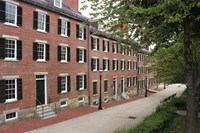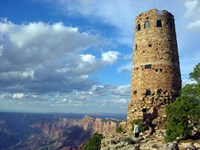- Old Spanish National Historic Trail (98)
- Golden Gate National Recreation Area (94)
- Bandelier National Monument (78)
- Santa Fe National Historic Trail (70)
- El Camino Real de Tierra Adentro National Historic Trail (58)
- White Sands National Park (56)
- Tumacácori National Historical Park (51)
- El Camino Real de los Tejas National Historic Trail (46)
- Presidio of San Francisco (46)
- Show More ...
- National Register of Historic Places Program (38)
- Archeology Program (29)
- National Heritage Areas Program (17)
- Geologic Resources Division (13)
- National Trails Office - Regions 6, 7, 8 (13)
- National Historic Landmarks Program (11)
- National Center for Preservation Technology and Training (10)
- Wildland Fire Program (8)
- Inventory and Monitoring Division (6)
- Show More ...
Showing 1,663 results for Spanish Pueblo Revival ...
Commemorating the Battle
Carnegie Museum of the Keweenaw
- Type: Person
Patrick J Mogan Cultural Center
Mabini Monuments
- Type: Place
Two monuments to Apolinario Mabini stand along the Asan Beach Trail. Mabini was the Prime Minister and Secretary of Foreign Affairs of the first Philippine Republic from January 23, 1899 – May 7, 1899. When the United States acquired the Philippines from Spain at the end of the Spanish-American War in 1899, Mabini and his followers refused to take an oath of allegiance to the United States and were exiled to Guam.
Assan through the Ages
- Type: Article
Assan Beach, the 2,500-yard shoreline stretching between Punta Adilok (Adelup Point) and Punta Assan (Asan Point), which the Marines in World War II called a "pair of devil horns," is a poignant symbol of the Guam's complex history, blending indigenous CHamoru traditions, wartime struggle, and ongoing military presence. In many ways, the story of Guam can be read through the story of Assan Beach. Talk a walk through history at Assan Beach.
- Type: Place
Greenwich Village Historic District’s reputation for dynamism can be attributed to its history of emerging artists and writers as well as the political unrest and activism of its inhabitants. With the rise of the counterculture movement during the 1960s, Greenwich Village’s Washington Square Park became a hub for writers and musicians. In 1969, LGB residents of Greenwich Village pushed back against police harassment at the Stonewall Inn.
Pecos Mission Church
The Pecos Pueblo
Biscuit Basin Trailhead (OK4)
The Legacy of the Port Royal Experiment
New York State Monument
- Type: Place
One of the tallest monuments on the field at about 58 feet tall, it was dedicated September 17, 1920, on the 58th Anniversary of the Battle of Antietam. The bronze tablets list the generals from New York who were in command and the New York regiments and batteries at Antietam and depict the New York State coat of arms. Almost one-fourth of the Union army at Antietam was from New York. Over 250 Civil War veterans attended the dedication.
Desert View Watchtower
- Type: Place
Desert View Watchtower Retail Store (View Room) is open daily: 8 am to 6 pm. The upper floors of the tower are open, when staffing allows, from 8:00 am to 4:00 pm. The last tower access is at 5:00 pm, with the stairs closed for the day at 5:30 pm. A ticket system admits 25 people with a 20-minute time limit. A National Historic Landmark, the Watchtower was constructed in 1932.The design by Mary Colter is based on Ancestral Puebloan architecture found in the southwest.
Park Store at the Visitor Center - Grand Canyon Conservancy
- Type: Place
Hours of Operation —Open 8 am to 7 pm daily. Located on the south side of Grand Canyon Visitor Center Plaza, adjacent to parking lot 4. This large store features books, maps, apparel, souvenirs, and gifts to help you plan, or share your trip to Grand Canyon with friends and family back home. A large variety of publications provide in-depth information about the canyon's geology —as well as natural and cultural history.
East Cape Campsite
- Type: Place
This campsite is an open shelly sand beach stretching for several miles along the Gulf of Mexico. Expect expansive sea views as well as magnificent sunsets and sunrises. Ruins of a dock used by an old concession tour may be found here. In the 1830s, Fort Poinsett was located here. Its mission was to thwart suspected arms trading between Indians and Spanish fisherman. Mosquitoes and sandflies may be a problem year round.
- Type: Place
In the early 1930s, the Wakefield National Memorial Association created all the buildings in the Historic Area as part of the nation's commemoration of Washington during the bicentennial of his birth. The Association constructed these buildings to be suggestive of a colonial farm complex, and did not construct them based on historical or archeological evidence of buildings that existed here in the 1700s.
- Type: Place




















